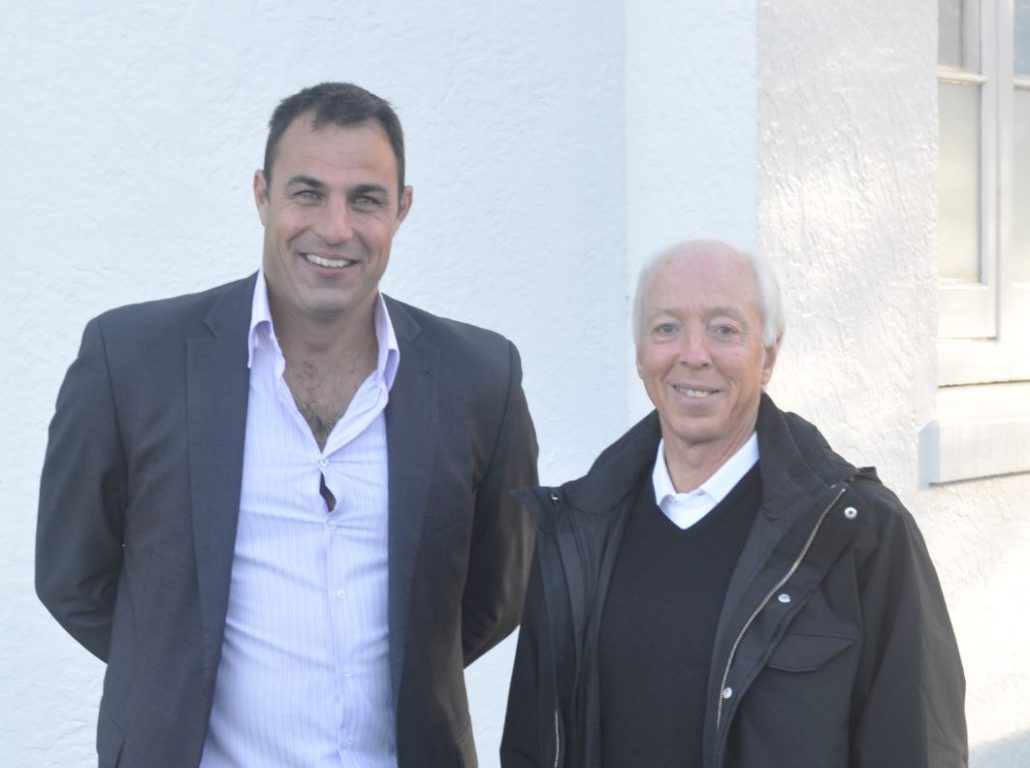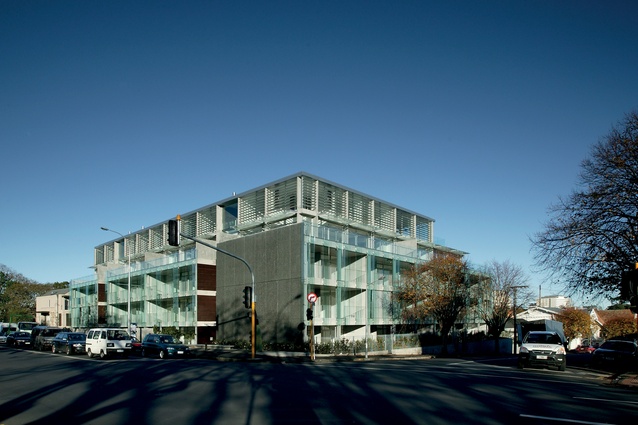Interviewing the greats: Clinton Bird – Urban Designer
We’re pleased to present the first in a series of “Interviewing the Greats”. The first candidate is Clinton Bird, a long time Parnell resident and an expert in all things urban design. I have known Clinton for over 12 years and have tremendous respect for his knowledge and diligence. His attention to detail means he is in my mind one of New Zealand’s leading urban designers with his input adding value to projects both from a financial and more importantly an aesthetic point of view. I often joke that if I had been in his classes at University he would have failed me for my lack of the qualities he possesses and would expect from his students.

Clinton Bird is one of Auckland’s most well-known and well respected Urban Designers, having has had a varied and distinguished career. He has been an Associate Professor at Auckland University, the author of some of the Plan Changes that brought urban design rules, objective and polices into the district plans at Auckland City Council and a founding member of the Urban Design Panel. Now an urban design consultant with a focus on large scale projects up and down the country; he is a regular respected Expert Witness in front of the Environment Court.
HF: The first and biggest question: What is urban design?
CB: This is a difficult question. These days, urban design seems to mean all things to all people. If you had asked me this question in the mid 70’s, I would have said it was about “the design of public space between building, by mediating between city plans and architectural projects”. However, I no longer believe that urban design is as simple as that.
Since the mid 1970’s, I have witnessed the scope of the urban design discipline expand exponentially. It now involves the interests of a broad range of professional and non-professionals, from architects, planners, heritage experts, economists, sociologists, health experts, climate change experts, members of local communities and so many more.
Increasingly, urban design needs to acknowledge and address an expansion of the traditional focus on, and intervention in, the public realm to now include the private realm the importance of economic and environmental sustainability.
So if I had to define urban design today, I would say urban design is a collective enterprise between all public and private sector urban-minded parties involved in city plan making, administration, and development with the goal to achieving an economically and environmentally responsive and sustainable city form, incorporating a diverse range of residential, institutional, commercial, and recreational activities, which is equitably accessible physically, socially and culturally.
HF: Why is good urban design important?
CB: Urban design is important because cities represent the use of increasingly scarce and valuable land, materials and human resources. The time that a development is designed is the optimum time to ensure that those resources are used wisely and in an economically and environmentally sustainable manner.
HF: You worked at Auckland University for 30 years, becoming an Associate Professor. How has the perception of urban design in New Zealand changed in that time?
CB: In the last 30 years the perception of urban design in New Zealand has changed immensely. It has gone from being something ‘nice to have’ to something which is considered critical to good, liveable and internationally competitive cities. When I started teaching at the University School of architecture in 1979, there was only one optional (elective) undergraduate course in urban design. When I left in 2008, there were two undergraduate courses in urban design (one of which was core) and a Masters Degree in Urban Design that my colleague Professor Diane Brand and I co-launched in 2005.
During the last 30 years, local governments up and down the country have established independent panels to review resource consent applications and many have incorporated urban design assessment criteria in their District Plans.
Urban design assessment/review reports are now an integral part of Assessments of Environmental Effects (AEE’s) submitted in support of resource consent applications. Today, urban design tends to be regarded as highly subjective and is often the most focused-upon and hotly debated professional discipline associated with a resource consent application.
HF: At what point do you think good urban design became important? Why do you think it became more important?
CB: It came to the fore because there was dissatisfaction with the quality of a lot of the buildings and the streetscapes that were resulting from buildings that were poorly designed, low cost and the developers of which often sought to maximize profits at the expense of creating high quality streetscapes. In Auckland City, this started to become apparent from the mid 1990’s when apartment living became more prevalent. People felt they weren’t getting the city they wanted. In order to enhance the quality of the city, design became far more important. This ground swell was probably originally aimed solely at the architecture of buildings, which is only one aspect of the urban design discipline, but it came from that reaction to the buildings and the low quality of city and its streetscapes that those buildings collectively produced.
HF: What cities can you think of that urban design is front a centre and what outcomes make that so?
CB: I consider Melbourne, Wellington and Auckland to be good examples of cities where urban design is ‘front and centre’. Although over differing time periods, these cities have undergone urban transformations to become more mixed-use, intensive, vibrant, 24/7 places with legible and coherent patterns of streets and public spaces in which people of all ages and cultures can live, work, shop, dine, play and be entertained, without having to rely on private motorised transport.
A key factor in the success of this process in Melbourne in particular, has been the continuity of senior Council staff, where the collective commitment to and memory of the urban design history and goals articulated for the city become firmly embedded in the culture of the Council planning and urban design departments. High staff turnover tends to undermine the potential benefits of this critical culture.
HF: As were one of the people responsible for Urban Design regulation and standards being incorporated into the Auckland City District Plan. Have you seen a change in our built form as a result?
CB: Yes, definitely. The introduction into the district plan of urban design objectives, policies, standards and assessment criteria has made Council’s expectations more explicit. This clarity has been welcomed by quality-driven developers. It has assisted professionals advising some of the more profit-focused developers to ‘lift their game’, and to deliver better quality buildings and streetscapes. In my experience good development and good urban design go hand in hand and result in a win-win outcome.
HF: You live and work in Parnell, in the Trinity Apartments opposite the Holy Trinity Cathedral. What characteristics of good design can be seen in the building?
CB: The Trinity Apartment building has many good urban design characteristics. For example the building is responsive to and maintains the scale, grain, permeability and character of the urban structure of the surrounding area. This building features as an exemplar of apartment and urban design in the Auckland Council Design Manual for Apartments.

HF: As a consultant, what does an average month look like for you in terms of your work?
CB: As a sole practitioner, it varies. Sometimes I work 7 days a week and at other times less. Being able to respond to varying workloads and pressures is something I enjoy. As a consultant, and often working as part of a team, I am focused on delivering to my clients on time. So I put in however many hours per week are necessary to achieve that goal.
An average month would involve around 180 hours of work. This would include site visits, photographing sites and their surroundings, formulating urban design-based building block layouts and street relationships. I attend project team meetings and pre-lodgement meetings with Council officers; I liaise with the project architects, write and illustrate urban design review reports. Increasingly rarely I also prepare urban design evidence for Council Hearings and/or give expert evidence at Environment Court Hearings.
Clinton, Thank you for providing input into making the face and body of Auckland and New Zealand a better place to live. I am very proud to have been able to work with you over the years and to now have a greater understating and appreciation of the ingredients and processes necessary to achieve good urban design outcomes.


Leave a Reply
Want to join the discussion?Feel free to contribute!